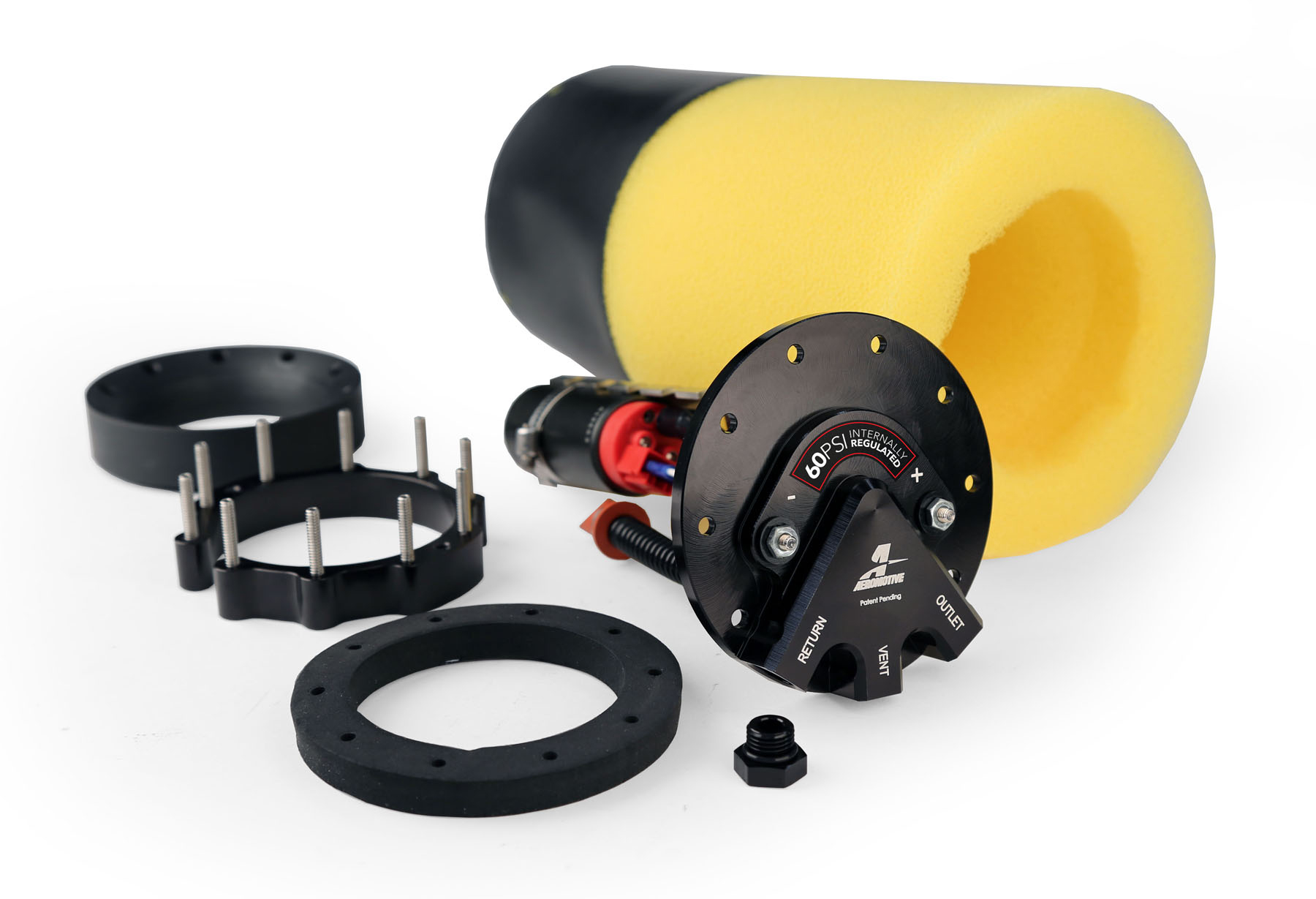From time to time, OnAllCylinders will provide a peek at some of the newest products and deals that can help get your next project on track for less. Check out what’s in our parts bin this week:

Though they look like a traditional return-style pump, Aeromotive returnless fuel pumps feature an internal bypass valve which allows you to run the pump without a return line. (Image/Aeromotive)
Many OE automotive manufacturers are switching to returnless fuel systems because they eliminate the complexity of running a separate return line found in traditional return-style fuel systems.
Want to learn more about return and returnless fuel setups? Read this.
But retrofitting a returnless system into a vehicle can be a confusing process. That is, until Aeromotive introduced its new series of in-tank returnless fuel pumps.
Slip one of these Aeromotive returnless fuel pumps into your tank, run a single -6 AN supply line to your engine, hook the pump up to power, and you’re ready to rock. These pumps eliminate a ton of fabrication and plumbing, making them a great choice for restomods or EFI conversions. In fact, Aeromotive tells us that you can install these with basic hand tools. There’s no welding required.
Aeromotive also says these new in-tank pumps eliminate hot fuel handling problems and vapor lock caused by cavitation. They also control fuel slosh so fuel stays at the pump inlet at all times, even when the tank is almost empty or during extreme driving conditions—like hard launches and aggressive cornering.
There are two pumps in Aeromotive’s returnless pump series, a 60 psi version for fuel injection and a 15 psi version for carbureted applications. (On carbureted vehicles, you’ll need to use an Aeromotive fuel pressure regulator to meet the psi requirements of your engine. Don’t worry, Aeromotive makes a few of them.)
The carbureted version features a Stealth 325 fuel pump and can support up to 900 horsepower (750 hp with forced induction). It is only compatible with gasoline.
The EFI version uses a Stealth 340 pump and supports up to 600 horsepower (450 hp, with forced induction). It is compatible with both gasoline and ethanol (E85).

This sounds fantastic. I have a 1968 Mustang with a 351 Cleveland. Will my gas gauge work correctly with this device? My tank is small, the car burns fuel a lot, so fuel “level” is important.
Hey Terry–here’s what we heard from the Aeromotive Tech Department:
“The Phantom is installed in the tank in its own hole, drilled with a 3-1/4” hole saw in the top of the tank. It needs to be located such that it does not interfere with the stock sending unit, which remains installed to inform the gauge of the fuel level in the tank. The stock outlet needs to be plugged or blocked.
The pump hat is 1” tall and in this year mustang the top of the tank is the trunk floor. There are no clearance issues per say, but the pump hat will stick up above the top of the tank 1”. The fuel lines will need to be routed through the trunk floor to get under the car.”
–Hope that helps, thanks for reading!